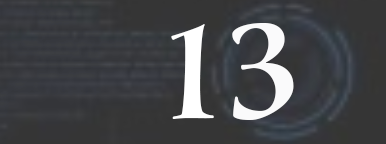ChatGPT Is Not Your Friend
Mark C. Marino
References
Bender, Emily M., et al. (2021). On the dangers of stochastic parrots: Can language models be too big? 🦜. Proceedings of the 2021 ACM Conference on Fairness, Accountability, and Transparency (pp. 610–23). doi:10.1145/3442188.3445922.
Chiang, Ted. (2023, Feb. 9). ChatGPT is a blurry JPEG of the web. The New Yorker. https://www.newyorker.com/tech/annals-of-technology/chatgpt-is-a-blurry-jpeg-of-the-web.
Eaton, Sarah Elaine. (2023). Six tenets of postplagiarism: Writing in the age of artificial intelligence. Learning, Teaching and Leadership. https://drsaraheaton.wordpress.com/2023/02/25/6-tenets-of-postplagiarism-writing-in-the-age-of-artificial-intelligence/.
Fan, Lai-Tze. (2023). Reverse engineering the gendered design of Amazon’s Alexa: Methods in testing closed-source code in grey and black box systems. Digital Humanities Quarterly, 17(2).
Kirschenbaum, Matthew. (2023, March 8). Prepare for the textpocalypse. The Atlantic. https://www.theatlantic.com/technology/archive/2023/03/ai-chatgpt-writing-language-models/673318/.
Marino, Mark C., and Rob Wittig. (2023). The grand exhibition of prompts. In Annette Vee, Tim Laquintano, and Carly Schnitzler (Eds.), TextGenEd: An introduction to teaching with text generation technologies. WAC Clearinghouse. https://wac.colostate.edu/repository/collections/textgened/creative-explorations/the-grand-exhibition-of-prompts/
Marino, Mark, and Chat GPT. (2023). Hallucinate this! An authoritized autobotography of ChatGPT.
McMurtrie, Beth, and Beckie Supiano. (2023, June 14). How professors scrambled to deal With ChatGPT. The Chronicle of Higher Education. https://www.chronicle.com/article/caught-off-guard-by-ai.
Mills, Anna, (Ed.). 2023. AI text generators: Sources to stimulate discussion among teachers. https://docs.google.com/document/d/1V1drRG1XlWTBrEwgGqd-cCySUB12JrcoamB5i16-Ezw/edit?usp=drive_web&ouid=116033055033861090565&usp=embed_facebook. Google Docs. Accessed 9 Nov. 2023.
Moretti, Franco. (2013). Distant reading. Verso Books.
Raley, Rita, and Jennifer Rhee. (2023). Critical AI: A field in formation. American Literature, 95(2), 185–204. Silverchair, doi:10.1215/00029831-10575021.
Taylor, Patricia, and Mark Marino. (2024). On feedback from bots: Intelligence tests and teaching writing. Journal of Applied Learning and Teaching, 7 (2), 110–117. doi:10.37074/jalt.2024.7.2.22.
Turing, A. M. (1950). Computing machinery and intelligence. Mind, 59(236), 433–60. doi:10.1093/mind/LIX.236.433.
Turkle, Sherry. (1997). Life on the screen: Identity in the age of the Internet. New York: Touchstone.
Weizenbaum, Joseph. (1966). ELIZA—A computer program for the study of natural language communication between man and machine. Communications of the ACM, 9(1), 36–45. doi:10.1145/365153.365168.
Weizenbaum, Joseph. (1976). Computer power and human reason: From judgment to calculation. W. H. Freeman.
Wittig, Rob. (2021). Netprov: Networked improvised literature for the classroom and beyond. Amherst College Press. doi:10.3998/mpub.12387128.
Yin, Ziqi, Hao Wang, Kaito Horio, Daisuke Kawahara, and Satoshi Sekine. (2024). Should we respect LLMs? A cross-lingual study on the influence of prompt politeness on LLM performance. arXiv.org, https://arxiv.org/abs/2402.14531v2.
